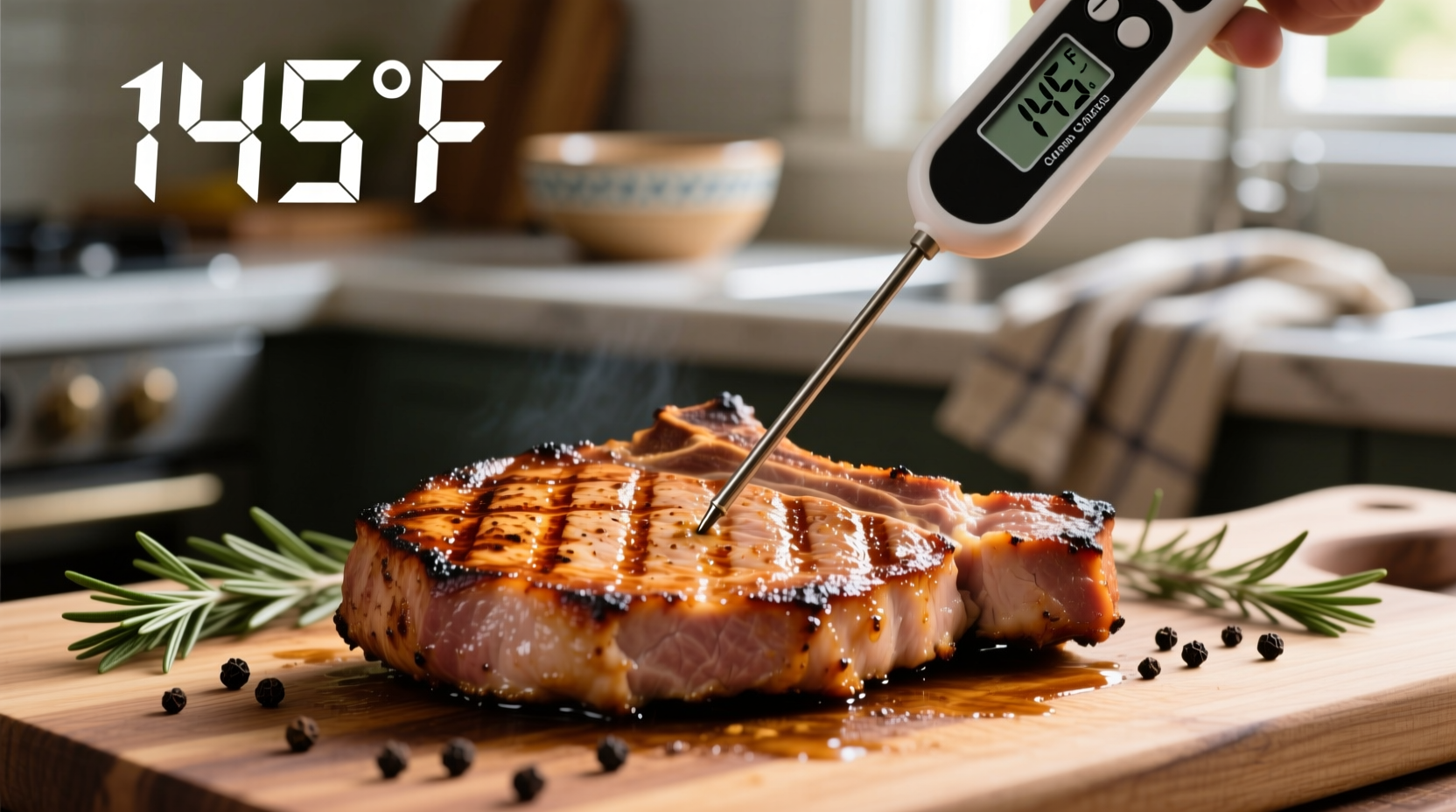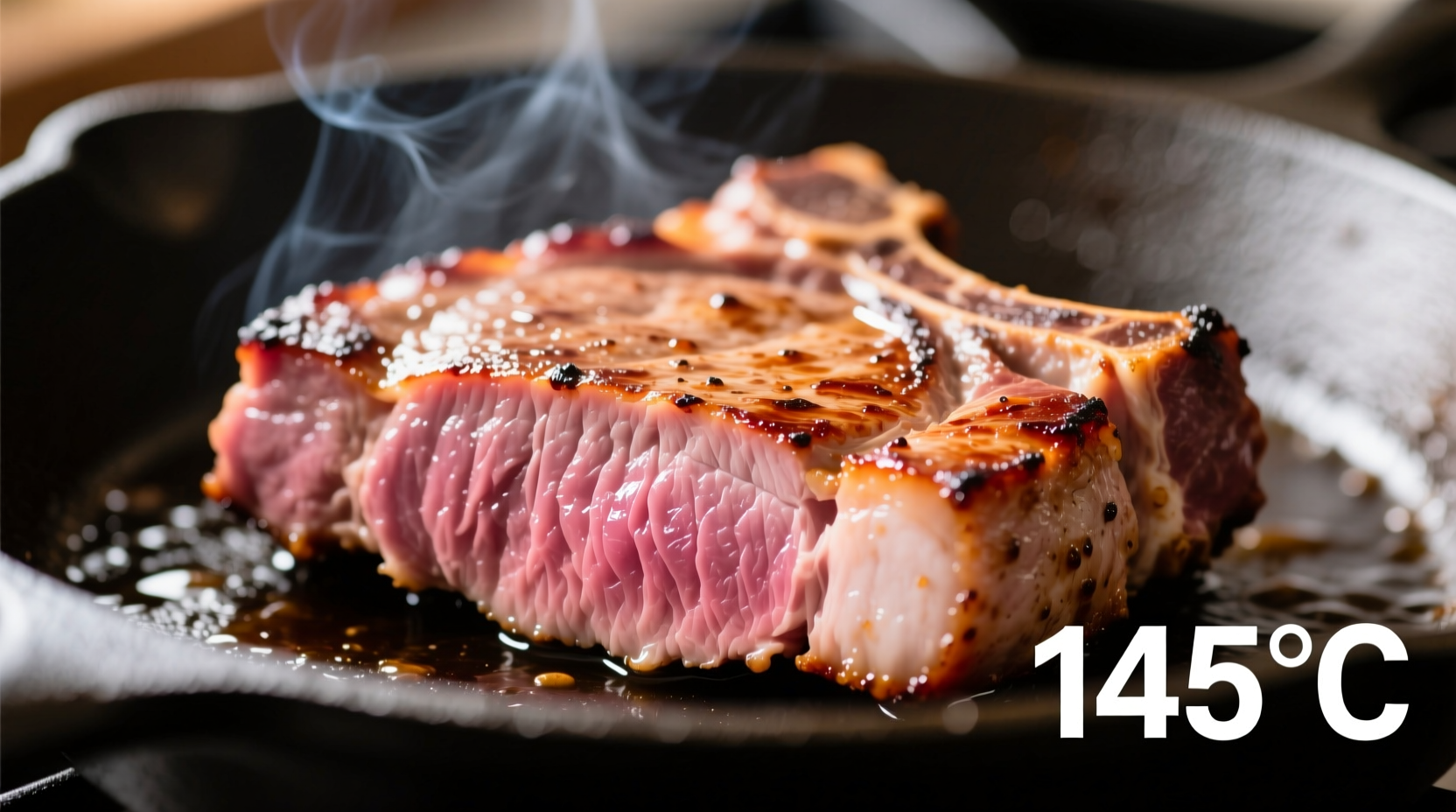For decades, home cooks were told to cook pork until it was well done and completely white. But modern farming practices and updated food safety research have revolutionized our understanding of safe pork preparation. Today, properly cooked pork can be slightly pink in the center while still being completely safe to eat. Understanding the precise temperature requirements isn't just about following rules—it's about achieving restaurant-quality results while protecting your family's health.
The Evolution of Pork Cooking Temperatures
Food safety guidelines for pork have undergone significant changes over the years. This evolution reflects improvements in pig farming, processing, and scientific understanding of foodborne pathogens:
| Time Period | Recommended Temperature | Key Scientific Understanding | Resulting Texture |
|---|---|---|---|
| Pre-1980s | 170°F+ (77°C+) | Trichinella spiralis was common in pork; required thorough cooking | Dry, tough, gray meat |
| 1980s-2011 | 160°F (71°C) | Trichinella reduced but still present; conservative approach maintained | Much drier than necessary |
| 2011-Present | 145°F (63°C) + 3-min rest | Trichinella nearly eliminated; pathogens die at lower temperatures with proper rest time | Perfectly juicy, slightly pink center |
This timeline shows how scientific advances have allowed us to enjoy pork that's both safe and delicious. The USDA updated its guidelines in 2011 based on research showing that trichinosis is now extremely rare in commercially raised pork in the United States, with only about 10 cases reported annually nationwide according to the Centers for Disease Control and Prevention.
Why 145°F Is the Perfect Pork Cooking Temperature
The magic of 145°F isn't arbitrary—it's the precise temperature where science meets culinary excellence. At this point:
- Salmonella and other harmful bacteria are effectively eliminated
- Trichinella parasites are destroyed (virtually nonexistent in commercial pork today)
- The meat's myoglobin protein structure changes to create that desirable pink hue
- Connective tissues begin to break down without excessive moisture loss
The critical 3-minute rest period after reaching 145°F allows for carryover cooking—where residual heat continues to gently cook the meat while juices redistribute. Skipping this rest period could result in up to 5°F additional temperature rise, potentially pushing your pork into the dry zone.
How to Accurately Measure Pork Temperature
Knowing the right temperature is useless if you don't measure it correctly. Follow these professional techniques for accurate readings:
- Use the right thermometer: Digital instant-read thermometers provide the most accurate results (within ±0.5°F)
- Insert properly: Place the probe into the thickest part of the meat, avoiding bones, fat, or gristle
- Check multiple spots: Especially for larger cuts like roasts or whole tenderloins
- Wait for stabilization: Keep the thermometer in place until the reading stops climbing
- Clean between uses: Prevent cross-contamination by sanitizing your thermometer between readings
Many home cooks make the mistake of checking temperature too early or in the wrong location. For bone-in cuts like pork chops, insert the thermometer parallel to the bone, about halfway through the meat. For ground pork products like sausages, check the center of the thickest portion.

Pork Temperature Guide by Cut
While 145°F is the universal safe temperature for whole-muscle pork cuts, different preparations have specific considerations:
| Cut of Pork | Target Temperature | Special Considerations |
|---|---|---|
| Pork chops (1-1.5") | 145°F + 3-min rest | Thicker chops benefit from reverse sear method |
| Pork tenderloin | 145°F + 5-min rest | Remove at 140°F to account for rapid carryover cooking |
| Pork shoulder (pulled pork) | 195-205°F | Requires higher temp to break down collagen; not for safety but texture |
| Ground pork | 160°F (no rest needed) | Increased surface area requires higher temperature for safety |
| Pork ribs | 190-203°F | Bending test more reliable than thermometer for doneness |
Notice the critical distinction between whole cuts and ground pork. When meat is ground, bacteria that were only on the surface become distributed throughout the product, requiring a higher cooking temperature of 160°F for safety. This is why pork burgers must be cooked hotter than pork chops.
Debunking Common Pork Cooking Myths
Despite updated guidelines, persistent myths continue to lead home cooks astray:
- Myth: "Pink pork is always unsafe"
- Reality: Properly cooked pork to 145°F will often retain a slight pink hue, which is perfectly safe according to USDA guidelines
- Myth: "Clear juices mean pork is done"
- Reality: Juice color is unreliable—pork can have clear juices below safe temperatures or pink juices when fully safe
- Myth: "You need to cook pork well done to avoid trichinosis"
- Reality: Trichinosis is extremely rare in commercial pork; proper temperature control at 145°F eliminates any risk
These misconceptions often lead to overcooked, dry pork that misses the mark on both safety and quality. The only reliable method for determining pork doneness is using a properly calibrated meat thermometer.
Practical Cooking Tips for Perfect Pork Every Time
Now that you know the science, here are professional techniques to implement these temperature guidelines:
- Bring to room temperature: Let pork sit out for 30-60 minutes before cooking for more even heating
- Use a leave-in probe thermometer: For roasts, insert a wireless thermometer to monitor without opening the oven
- Account for carryover cooking: Remove pork from heat source 5°F below target temperature
- Rest properly: Tent loosely with foil and rest on a warm surface, not a cold plate
- Calibrate regularly: Test your thermometer in ice water (32°F) or boiling water (212°F)
For beginners wondering how long to cook pork at what temperature, remember that time is variable while temperature is absolute. A 1-inch pork chop might take 8-10 minutes per side on a hot grill, while a 3-pound loin roast could require 20-25 minutes per pound in a 350°F oven. The only reliable indicator is the internal temperature.
Special Considerations for Different Cooking Methods
Whether you're grilling pork chops, roasting a loin, or slow cooking a shoulder, understanding how your cooking method affects temperature is crucial:
- Grilling: Use two-zone cooking—sear over direct heat, then move to indirect heat to reach 145°F without burning
- Oven roasting: Start high (425°F) for crust development, then reduce to 325°F for even cooking
- Sous vide: Cook at precisely 140-145°F for 1-4 hours depending on thickness, then sear
- Slow cooking: For pulled pork, cook to 195-205°F where collagen breaks down into gelatin
Each method requires slight adjustments to achieve that perfect 145°F internal temperature. For example, when sous vide cooking, you can safely hold pork at 140°F for several hours, which pasteurizes the meat while keeping it incredibly tender.
Food Safety Beyond Temperature
While temperature is critical, safe pork preparation involves multiple factors:
- Cross-contamination prevention: Use separate cutting boards for raw pork and ready-to-eat foods
- Hand hygiene: Wash hands thoroughly after handling raw pork
- Refrigeration: Store raw pork below 40°F and use within 3-5 days
- Leftover safety: Refrigerate cooked pork within 2 hours and consume within 3-4 days
Remember that proper temperature is just one component of food safety. The USDA Food Safety and Inspection Service emphasizes that safe food handling practices before and after cooking are equally important for preventing foodborne illness.
Conclusion: Perfect Pork Made Simple
Modern pork cooking is a perfect balance of science and culinary art. By cooking pork to 145°F with a 3-minute rest, you're not just following safety guidelines—you're unlocking the best possible eating experience. This precise temperature ensures food safety while preserving the natural juices and delicate texture that make pork such a versatile protein.
Invest in a quality digital thermometer, understand the differences between cuts, and don't fear that beautiful pink hue in your properly cooked pork. When you master these temperature guidelines, you'll consistently produce pork dishes that are both safe and spectacularly delicious.











 浙公网安备
33010002000092号
浙公网安备
33010002000092号 浙B2-20120091-4
浙B2-20120091-4